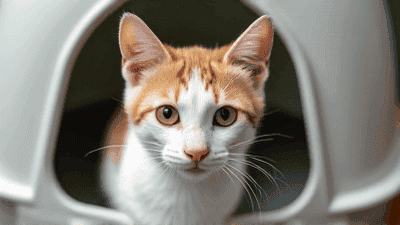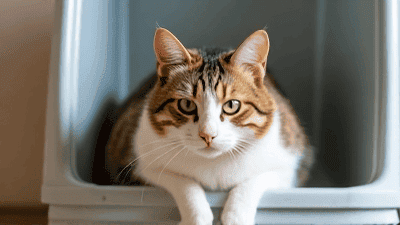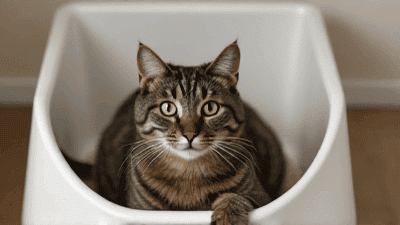
Cats are known for their independence and fastidious nature, especially when it comes to their litter box habits. However, changes in how your cat uses the litter box can be a sign of underlying health issues. Understanding what’s normal and what’s not is crucial for maintaining your cat’s health and well-being.
A cat’s litter box habits can provide valuable insights into their physical and emotional health. Cats are creatures of habit, and any changes in their routine could signal a problem.

Most cats urinate 2-4 times a day and defecate once a day. However, this can vary depending on factors like diet, age, and activity level.
Cats typically dig before and after using the litter box to cover their waste. They should not appear to be straining or showing signs of discomfort.

Kidneys filter waste from the blood, and when they fail, toxins can build up, leading to increased urination and thirst.
High blood sugar levels can cause increased urination and thirst, as the body tries to eliminate excess glucose.
Changes in the household, such as moving or introducing a new pet, can cause stress-related litter box issues.
If your cat doesn’t like the type of litter or the location of the litter box, they may avoid using it.
Cats may urinate outside the litter box to mark their territory, especially in multi-cat households.
Changes in routine or environment can lead to stress, which may manifest in litter box problems.
Older cats or those with arthritis may find it difficult to access the litter box, leading to accidents.

In multi-cat households, having one litter box per cat plus an extra can help reduce competition and stress.
Experiment with different types of litter to find one that your cat prefers. Some cats dislike scented or heavily perfumed litter.
Scoop the litter box daily and change the litter regularly to keep it fresh and appealing.
Place the litter box in a quiet, easily accessible location. For older cats, consider a low-sided box for easier entry and exit.
Identify and address potential stressors in your cat’s environment. Provide safe spaces, toys, and plenty of attention to help them feel secure.
If your cat’s litter box habits change for more than a day or two, it’s time to consult your vet.
Straining, crying out in pain, or producing blood in urine or feces are signs that require immediate veterinary attention.
If your cat suddenly starts urinating or defecating outside the litter box, it’s important to rule out medical causes.
These symptoms, combined with changes in litter box habits, could indicate a serious underlying condition.
A urine sample can help detect infections, crystals, or other abnormalities.
Blood work can assess kidney and liver function, as well as check for diabetes or other metabolic disorders.
X-rays or ultrasounds can help identify bladder stones, tumors, or other structural issues.
A stool sample can reveal parasites, infections, or other gastrointestinal problems.
Annual exams can help detect and address health issues before they affect litter box habits.
Ensure your cat has a balanced diet and access to fresh water to support urinary and digestive health.
Provide toys, scratching posts, and interactive play to reduce stress and keep your cat mentally stimulated.
Cats thrive on routine. Try to keep feeding, playtime, and litter box cleaning schedules consistent.
Your cat’s litter box habits are a key indicator of their overall health. By understanding what’s normal and what’s not, you can take proactive steps to address any issues before they become serious. Regular monitoring, proper litter box management, and timely veterinary care are essential for keeping your feline friend healthy and happy. Remember, when in doubt, always consult your veterinarian to ensure your cat receives the best possible care.